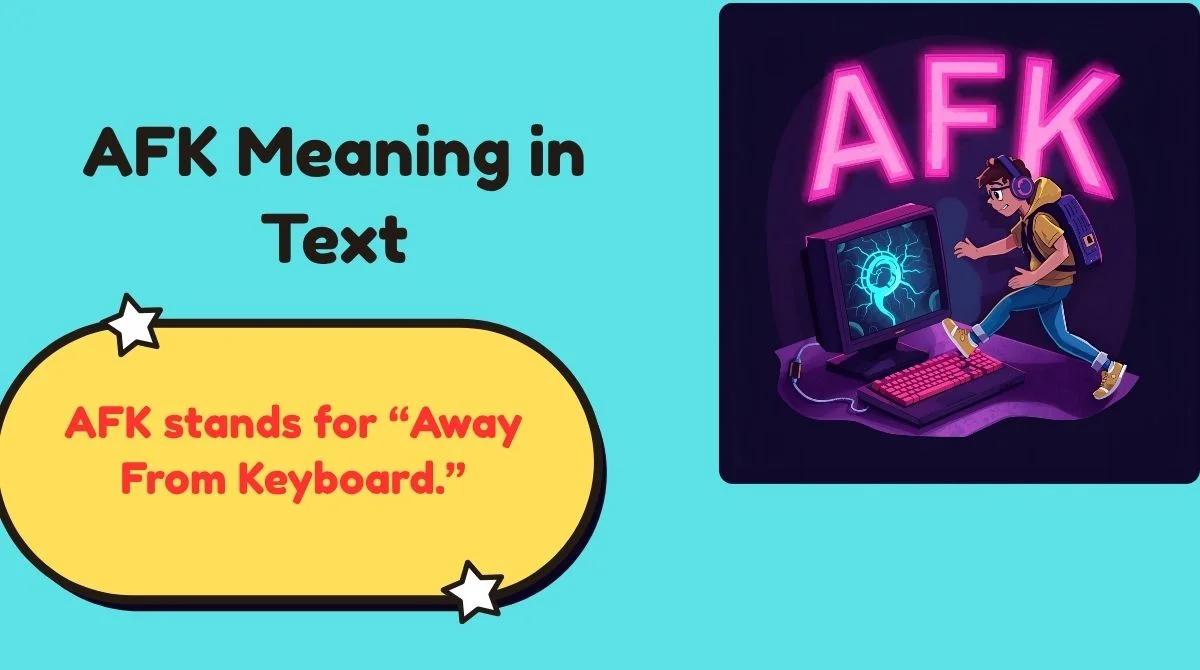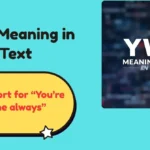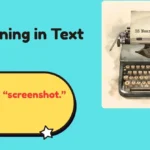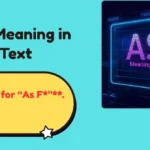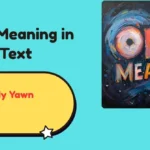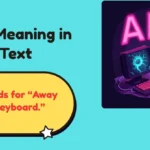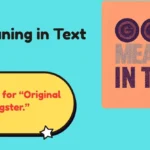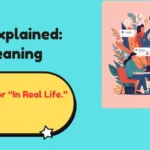Communication has changed dramatically in the digital era. Acronyms, shorthand, and emojis have become part of our daily conversations. One term you’ve probably seen frequently online or in games is AFK.
But what does it actually mean, where does it come from, and how should you use it today? In this guide, we’ll dive deep into AFK meaning in text, its history, modern relevance, alternatives, and practical tips for using it properly.
Whether you’re a gamer, professional, or casual texter, understanding AFK can help you communicate clearly and avoid misunderstandings.
What Does AFK Stand For?
AFK stands for “Away From Keyboard.”
It’s a simple phrase, but it carries specific meaning depending on the context. Originally, it indicated that someone had physically stepped away from their computer or device and was temporarily unavailable.
Examples in modern usage:
- In gaming: “AFK for 5 minutes, don’t start without me.”
- In workplace chat: “I’m AFK for lunch, will reply in an hour.”
- In casual texting: “Going AFK, talk later!”
AFK is shorthand, designed to save time and convey a clear message without lengthy explanation. It works in gaming, texting, and online meetings where quick communication is essential.
Where Does the Term “AFK” Come From?
The term AFK originated in the early days of the internet, specifically within MUDs (Multi-User Dungeons) and MMORPGs (Massively Multiplayer Online Role-Playing Games). Players needed a quick way to inform others that they were temporarily unavailable without leaving the session abruptly.
Over time, AFK spread beyond gaming. Instant messaging platforms like IRC, Discord, and Slack adopted the term. Even social media users started using it casually, especially when stepping away from chats, streams, or discussions.
Interesting Fact: AFK is often paired with other acronyms like BRB (“Be Right Back”) and GTG (“Got To Go”), creating a mini-vocabulary for online communication that is quick and efficient.
Is AFK Still Relevant Today?
Even with the rise of emojis, GIFs, and short status updates, AFK remains relevant. Its continued use is especially noticeable in:
- Gaming: Players still use AFK to signal temporary absence during raids, co-op missions, or live streams.
- Professional chat platforms: Teams sometimes use AFK to indicate short breaks, especially in remote work environments.
- Casual conversations: Friends in group chats often use AFK humorously or informally.
Trends: Younger audiences may prefer emojis like ⌛, 🚶♂️, or 🙈 to signal absence. Still, AFK remains a recognized term globally, making it an enduring part of online communication.
When Should You Use AFK?
Knowing when to use AFK ensures that your message is understood and appropriate. Here’s a breakdown of contexts:
| Situation | Should You Use AFK? | Recommended Approach |
|---|---|---|
| Gaming session | ✅ Yes | Use AFK to signal temporary absence to teammates |
| Workplace chat | ⚠️ Sometimes | Pair AFK with clear timing or an alternative like “Stepping away for a moment” |
| Casual texting | ✅ Yes | Use freely, optionally add emojis |
| Social media comment threads | ⚠️ Sometimes | Avoid if the audience may not understand the term |
Tips:
- Always provide a time estimate if possible: “AFK 10 mins.”
- Use AFK sparingly in professional environments to maintain clarity.
- Combine with emojis in informal settings for extra clarity: “AFK ⌛.”
Why Look for Alternatives to AFK?
Although AFK is widely recognized, there are situations where alternatives might work better:
- Professional settings: Some coworkers may not know gaming slang. Saying “AFK” without context can confuse them.
- Clarity: Clear alternatives help avoid miscommunication, especially in fast-moving chats.
- Modern communication trends: People now prefer concise, polite, or emoji-enhanced messages.
Using alternatives ensures your message is appropriate, courteous, and universally understood.
15 Polite, Professional, or Creative Alternatives to AFK
Not all AFK situations are equal. Here’s a curated list of alternatives, categorized for clarity:
Professional Alternatives
- “Stepping away for a moment.”
- “I’ll be unavailable for a few minutes.”
- “Currently away from my device.”
Casual / Friendly Alternatives
- “I’ll be right back.”
- “Taking a short break.”
- “BRB (Be Right Back)”
Creative / Fun Alternatives
- “Temporarily away — back soon!”
- “Quick break — I’ll respond shortly.”
- “I’m momentarily away.”
- “Be back shortly.”
- “Stepping out for a few minutes.”
- “Not available at the moment.”
- “Away from the keyboard.”
- “I’ve stepped out — will follow up soon.”
- Emoji-based cue: ⌛🖥️
These alternatives allow you to match your tone with the platform and audience.
How to Choose the Best AFK Alternative Based on Context
Selecting the right AFK alternative depends on audience, platform, tone, and urgency.
Decision flow:
- Who is the recipient? Friend, coworker, team, or audience.
- Where is the message sent? Gaming chat, Slack, Discord, or social media.
- What’s the tone? Formal, casual, humorous, or neutral.
- How long will you be away? Provide an estimate if possible.
Example:
- Slack: “Stepping away for 10 minutes.” ✅ Professional and clear
- Discord gaming: “AFK 5 mins, don’t start without me” ✅ Informal, appropriate
- Group chat with friends: “BRB ⌛” ✅ Casual and playful
Pro Tip: Combining text with emojis can make your message instantly recognizable without needing long explanations.
AFK in Modern Communication: Evolution & Trends
AFK has evolved beyond its gaming origins. It’s now a part of digital shorthand, recognized by almost everyone who uses the internet.
Key trends:
- Shift from slang to status indicator: AFK can be a quick status update, like “away” or “busy.”
- Integration with AI and predictive text: Many chat apps suggest alternatives like “Be right back” automatically.
- Emoji and GIF usage: People increasingly use visual cues, sometimes replacing traditional acronyms.
Case Study: On Discord, users often set AFK messages that automatically notify the chat:
“User is AFK. Back in 15 minutes.”
This automation improves communication flow in fast-moving chats and avoids confusion.
Despite modern alternatives, AFK remains universally recognized, proving that simplicity and clarity often win over flashy trends.
FAQs About AFK Meaning in Text
What does AFK mean in texting?
AFK means “Away From Keyboard” and indicates temporary unavailability.
Is AFK considered professional?
It can be used professionally if paired with context, like “AFK for lunch, back at 1 PM.”
How long can I be AFK before it becomes rude?
Typically, 5–15 minutes is acceptable in casual chats; in professional settings, provide a clear timeframe.
Can AFK be used on mobile phones?
Yes. Even though it originated for keyboards, AFK now broadly signals temporary absence from devices.
What are some polite alternatives to AFK?
“Stepping away for a moment,” “I’ll be right back,” and “Taking a short break” are widely accepted alternatives.
Summary: The Evolution of AFK in Modern Communication
AFK has come a long way from its gaming origins. Today, it is a versatile, recognized shorthand for temporary absence.
- It works in gaming, casual chats, and even professional environments when used thoughtfully.
- Alternatives exist for those who prefer polite, professional, or creative phrasing.
- Modern trends, including emojis and predictive text, enhance clarity while preserving brevity.
By understanding AFK meaning in text and its proper usage, you can communicate effectively and avoid confusion.
✅ Final Tip
Always consider your audience and platform. AFK is quick and efficient, but clarity and courtesy should come first.
Use alternatives when necessary, provide a timeframe, and combine with emojis or visual cues if appropriate.
Doing so ensures your message is understood, polite, and engaging.
